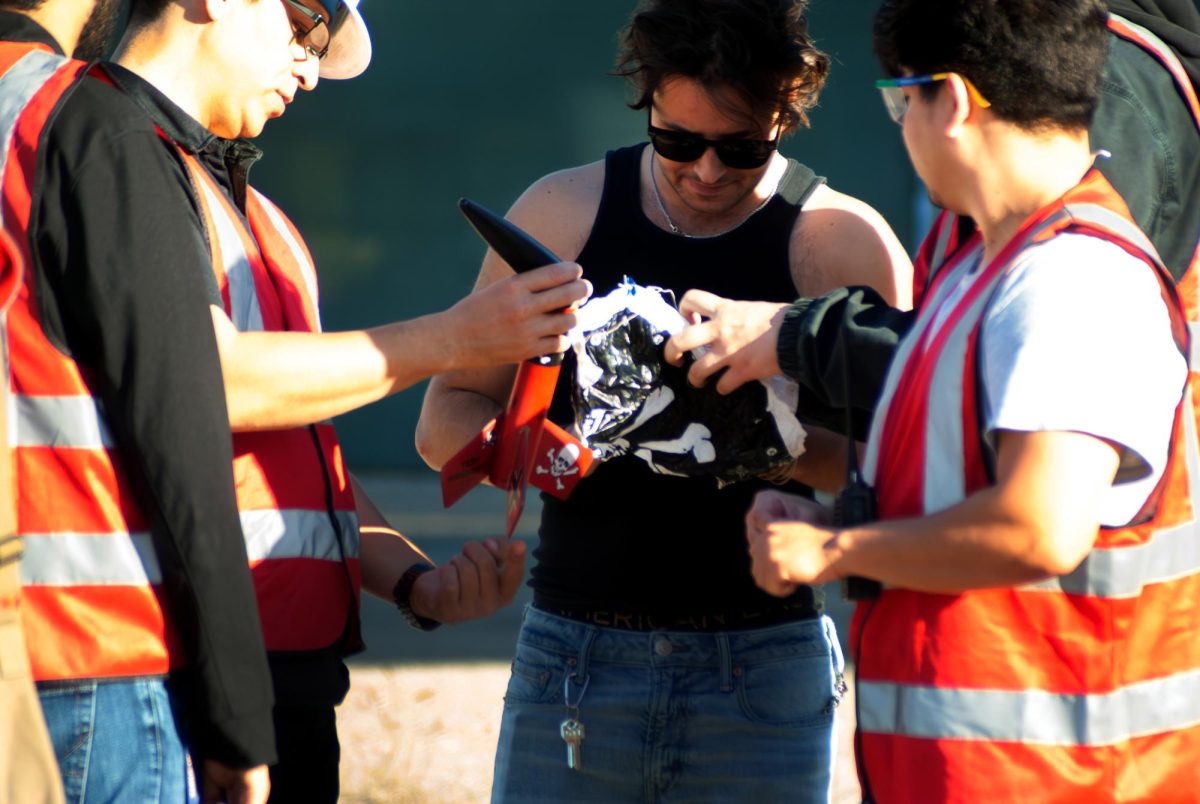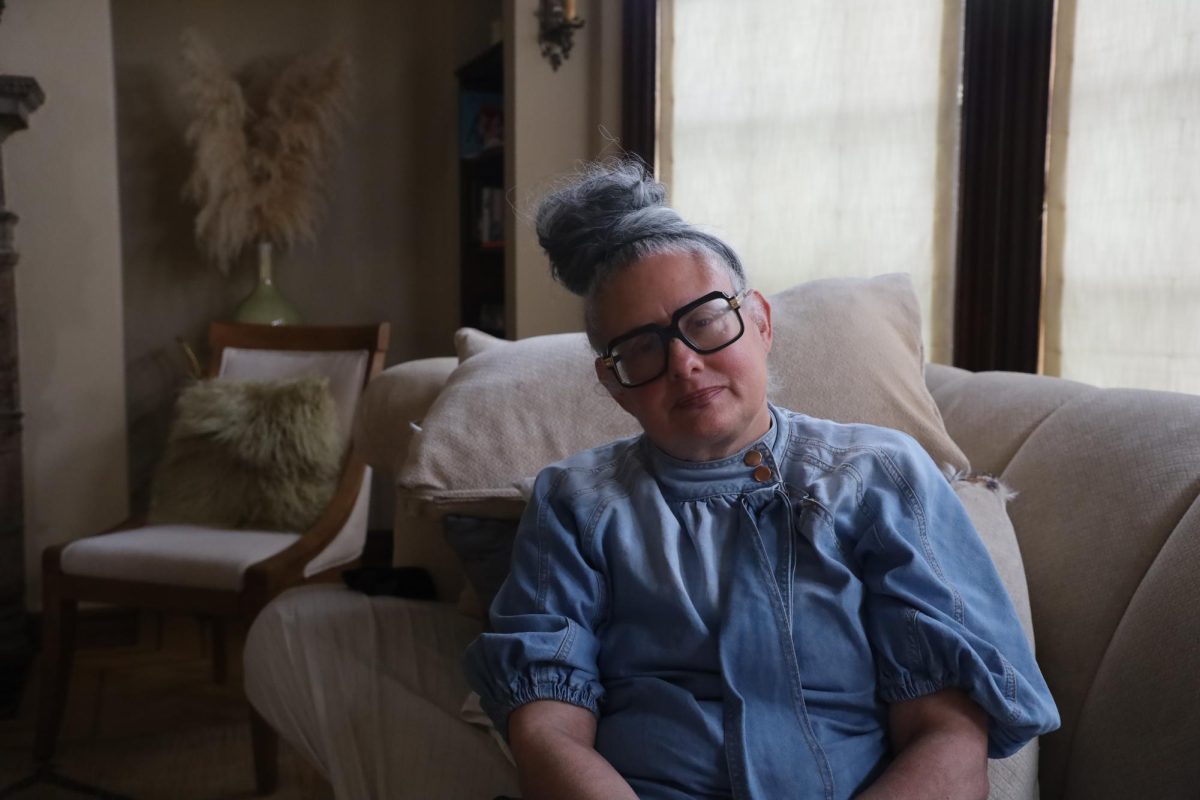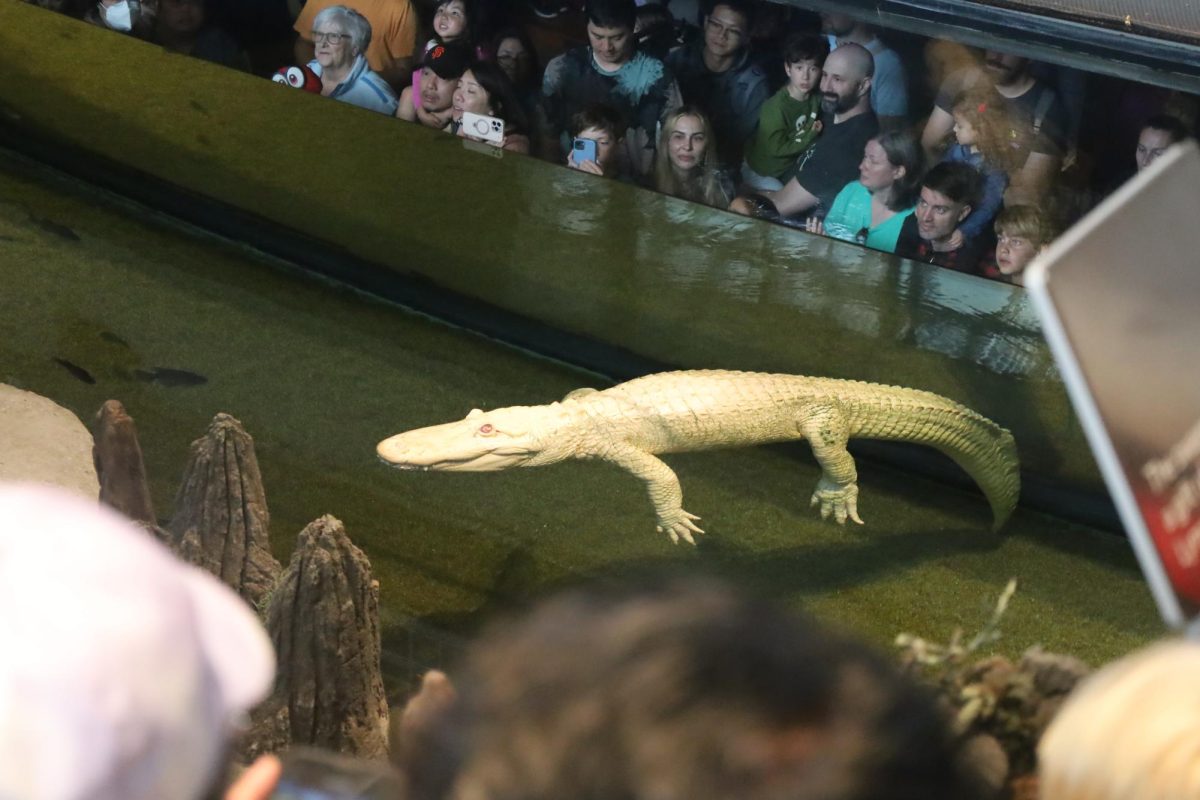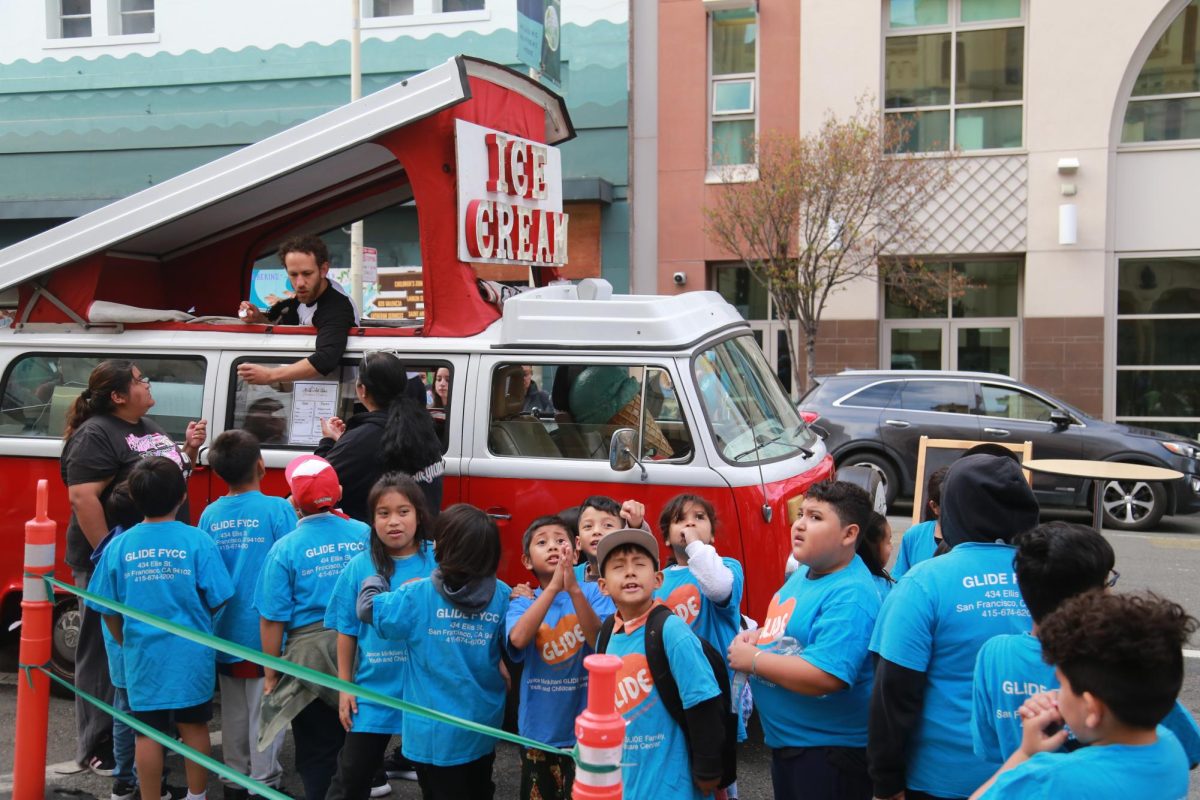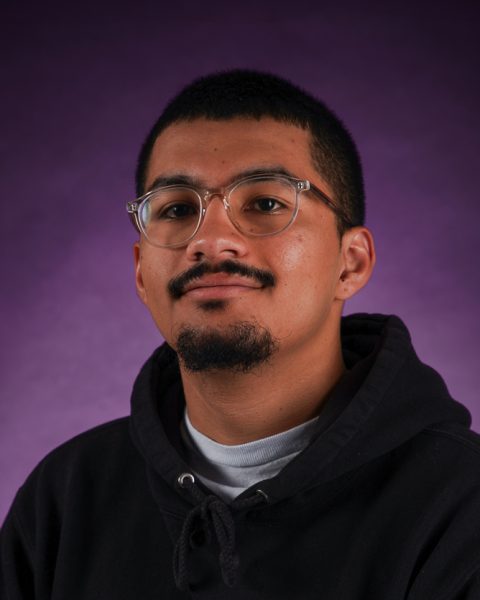In the early morning mist, members of Fog City Rocketry gather in Lot 25 to assemble and test their latest rocket. As SF State’s student-led rocketry club, they bring together skills in engineering, coding and design to build rockets from the ground up. For these students, the work is as much about exploring technical challenges as it is about testing the boundaries of amateur rocketry.
Marc McClure, the newly elected president of Fog City Rocketry, has been an integral part of the club since its revival three years ago. With a focus on building hands-on projects, McClure and other members of Fog City Rocketry hope to reach new heights with collaborative efforts on these projects.
McClure reflects on the early days of the club, emphasizing the challenges they faced in revitalizing the organization.
“When it started, it was just me, Jorge Aguilar and Oskar Garcia,” McClure said. “We just started out in the basement of Thornton Hall, and we met from 8-10 p.m. It was just pretty much us three.”
McClure noted that the members had to navigate the remnants of the previous club, which had ceased operations.
“We had to pick up the scraps that were left because when the previous club died, the school didn’t think it was going to come back.” McClure said. “So it was like, the bylaws were super messed up. And there’s just no infrastructure in place.”
With the challenges of rebuilding a club that lacked infrastructure, McClure and the core members of Fog City Rocketry established an executive team.
“We have the executive team, which is me, Jorge, Oskar, Talon and Eshton,” McClure said. “I try to just do as little of the actual work as possible and just manage and direct because the guys in the club are so much better at it than what I can do. And also, it’s for them; I’m just here to help facilitate and give them the resources that they need.”
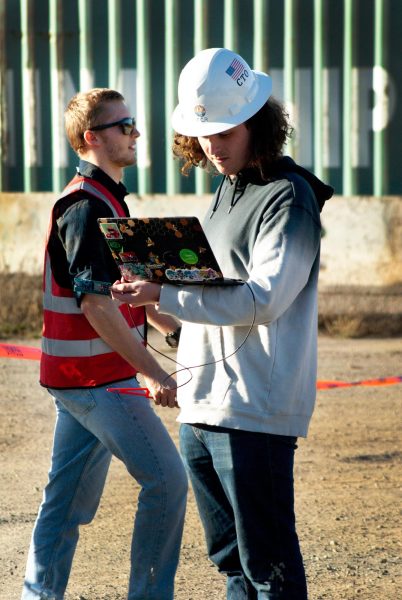
McClure stated how the beginnings of a project happen as well.
“Basically, our first idea is how heavy is it going to be? Then, once we figure that out, we can figure out what type of motor we need to buy.” he said. “From there we can model up a rocket and then 3D print out the fins, get an appropriate size cardboard tube, [3D] print out the nose cone, start wiring everything up, and then do a bunch of testing before we launch.”
For Isaac Reyes, being part of Fog City Rocketry has created a sense of camaraderie, a connection built through shared goals and teamwork with his fellow members.
“I handle mostly all the 3D aspects for the club,” Reyes said. ”So I make the 3D models for the rocket that can include the rocket body, the engines, the nose cones. And when it’s a lot of work, I don’t do it all myself. I hand it off to other people that I know that I can trust with it.”
Reyes also spoke on the intricacies of rocket design.
“So, sure, we can make a rocket really easily, real quick. But how tall versus how wide?” said Reyes. “How big is the motor going to be? How tall is the motor going to be? How much space is [needed] inside for all electronic components? What shape should the nose cone be? All those questions take quite a while to answer because most of them rely on extensive math. It’s literal rocket science.”
Reyes’ involvement in the club is more of a side project. However, he enjoys the time spent within the club.
Reyes further added what he finds to be the rewarding aspect of it all.
“It’s just cool to see the culmination of everyone’s work come together and actually see it blow up, so to speak,” Reyes said.
Ethan Hanlon, the chief technology officer of Fog City Rocketry, spoke on the welcoming nature of the club as well.
“It’s great. Whether you’re here just for a meeting or if you’ve got the wherewithal to commit to the full stretch… It’s always been a pretty great community.” Hanlon said.
Hanlon spoke on his role, “I’m pretty good when it comes to the code and I can design basic circuits,” he said.
Hanlon also noted how members at Fog City Rocketry can be complimentary in any aspect of the projects.
“I designed the first iteration of the IMU circuit [inertial measurement unit]. We’ve been working on a new version of that and we have some new members who are actually a lot better at the electrical engineering than I am. They’re really helping. I’m still able to contribute by giving input on ‘Okay, this is what you guys want to have happen from an electrical perspective.”
Hanlon further added how his coding work is also helping his career.
“It’s pretty nice because I’m actually applying the computer science stuff that I’m learning in class onto a real project.”
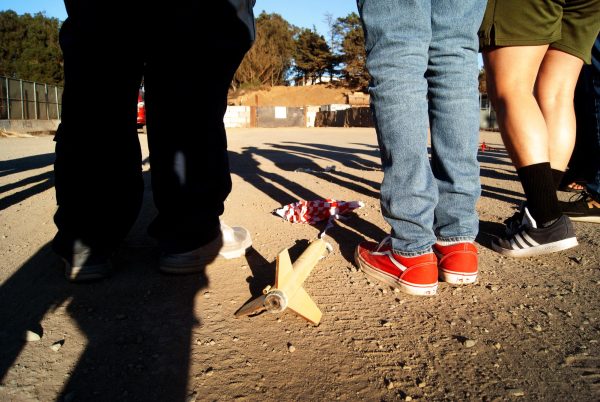
Anthony Gamarra, a graduate student involved in Fog City Rocketry, spoke on how the club helped him find further interests as well as career advancements.
“So, when I found the rocketry club, it was very much ‘How can I apply all this stuff that I’ve been learning to another project to gear me back toward the aerospace field?’ And it seems to be that perfect place to do so,” Gamarra said.
Oskar Garcia, one of the core members of Fog City Rocketry, notes the lack of proper funding for the program is detrimental to their projects.
Garcia acknowledged the challenge of keeping up with more experienced and better funded university rocket clubs, explaining that the team aims to reach the same success as these universities.
“They can make rockets that are taller, like, seven, eight feet tall, and they go almost up to space,” Garcia said. “They can carry like a two pound little robot or a sensor. Every year, they have some new thing that you have to put on the side – a payload – and they have the resources to make these bigger competition-ready rockets.”
Garcia further noted how most of the components bought for the rockets comes out of pocket.
“From the very beginning, much of the funding for the rocket club came from the pockets of the students. I would buy some rockets and they weren’t that big, they were for kids,” Garcia said.
Garcia added on the lack of proper support and funding from the school.
“The school will not pay for our rockets or rocket parts,” said Garcia. “They don’t. We asked them for help and they said, ‘Well, we’ll give you some advertising and pizza money,’ but they’ll never buy stuff for us.”
Garcia stated that the lack of funding leads to the rocket club not having the appropriate technology.
“We came up with a design that is cheap and theoretically possible,” Garcia said. “It could be done with, maybe 300 bucks, but it’s not guaranteed. It’s like our first ever design and we can’t cool our liquids down. We’re not using some crazy cryogenic technology like UC Berkeley, we have to think about things that we could do with the limitations that we have.”
One of the competitions that Fog City Rocketry frequently participates in each year is the FAR-OUT Competition, which is held annually every June.
Garcia further stated the goal is to surpass the competition as well.
“Well, I want to beat UC Berkeley for sure,” Garcia said, but mentioned his ambitious goals are going to take time.
Garcia further went into detail about the challenges the competitions bring.
“The thing is that the FAR-OUT Competition is about rockets where you make the engine yourself. And it’s not solid [fuel]…You have to have pumps, air valves, and you have to spray a liquid into the ignition area and ignite it. And all my buddies that do the design… they tell me that it’s a nightmare.”
Fog City Rocketry President Marc McClure provides an optimistic look into the club’s future.
“On [November] the 8th we’re going to be going to Astra, which is a space company based in Alameda,” said McClure. “And, so, it’s rocket club focused, we need to get information, contacts and resources.”
McClure further spoke on the inclusiveness of the club.
“It’s awesome,” McClure said. “We have people from all majors that do all sorts of stuff, and, it’s like, we’re all just nerds; we all just go and geek out about rockets, and it’s great.”



